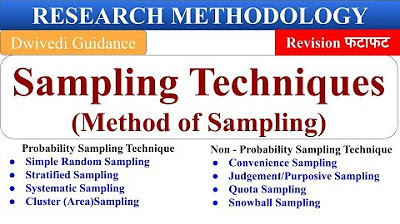Particulate Formation, Evolution, and Fate -Michelson Day 3 Part 1
Summary
TLDRThe speaker discusses various diagnostics techniques for analyzing particles in flames, emphasizing the challenges of sampling without perturbing the reactive environment. They delve into methods like using a quartz probe, stagnation plate extraction, and jet entrainment sampling, each with its advantages and limitations. The talk also explores the application of X-ray techniques, such as SAXS and WAXS, for measuring incipient particles and the use of Laser Induced Incandescence (LII) for sensitive soot detection. The summary highlights the importance of accurate data analysis and the need for further research in this complex field.
Takeaways
- 🔬 The speaker discusses different diagnostic methods for analyzing particles in flames.
- 🔥 Ex-situ diagnostics involve extracting samples from the flame using a quartz probe, which can perturb the flame.
- 🔍 Perturbations caused by the probe can affect temperature distribution, flow field, and radical distribution in the flame.
- 🧪 Extracting particles without perturbing the flame is challenging, and various methods have been tried to mitigate this.
- 💡 A stagnation plate technique is used to stabilize the flame and model the temperature distribution during sampling.
- 📊 The speaker mentions the importance of accounting for probe effects when analyzing experimental data.
- 🌡️ Sampling techniques like the entrainment method use inert gas jets to collect particles with minimal flame perturbation.
- 🛠️ Different sampling methods, including thermophoretic sampling and jet entrainment, have their own advantages and challenges.
- 🌟 The goal is to obtain accurate particle characteristics without significantly altering the flame environment.
- 🧬 In-situ diagnostics like laser-induced incandescence (LII) are used for real-time measurement of soot in various conditions.
Q & A
What are the challenges associated with sampling particles from a flame?
-Sampling particles from a flame is challenging because it often perturbs the flame, affecting the temperature distribution, flow field, and radical distribution. Extracting particles without disturbing the reactive environment is difficult.
How do quartz probes impact the sampling process?
-Quartz probes, when inserted into the flame, can cause perturbations that affect the temperature, flow field, and radical distribution. These perturbations can lead to less accurate measurements of the particles being sampled.
What is a stagnation plate and how is it used in sampling?
-A stagnation plate is placed above the flame with a hole through which gas is passed, sucking up particles into the stabilization region. It helps model the probe's effect and account for temperature changes during sampling.
What are the benefits and drawbacks of using a stagnation plate for sampling?
-The benefits include better modeling of the probe effects and temperature accounting. However, it can quench the chemistry at the sampling region, leading to less accurate measurements of the radical distribution.
What is the jet entrainment sampling technique?
-The jet entrainment sampling technique involves using a jet of cold inert gas, such as nitrogen or argon, to entrain particles from the flame into a collector tube. This method minimizes perturbations to the flame.
How does the jet entrainment technique minimize flame perturbations?
-The technique avoids placing a probe directly in the flame, reducing heat conduction and catalytic reactions. The cold gas jet quickly cools and dilutes the particles, minimizing perturbations.
What issues still need to be addressed with the jet entrainment technique?
-The main issue is coagulation of particles at lower heights in the flame. Improved dilution methods are needed to prevent particles from sticking together and to achieve better spatial resolution.
What is Laser-Induced Incandescence (LII) and how is it used?
-LII is a technique used to measure soot by heating particles with a laser until they emit incandescence. It is sensitive to soot particles and can be used for volume fraction measurements, particle sizing, and assessing particle maturity.
How does LII help in measuring primary particle size?
-LII measures the cooling rate of particles after they are heated by the laser. The cooling rate, which depends on the surface-to-volume ratio, can be modeled to determine primary particle size.
What are the advantages of using scattering techniques for particle measurement?
-Scattering techniques, such as elastic scattering, can provide information on primary particle size, volume fraction, aggregate size, and the number of primary particles in aggregates. They offer a non-invasive way to measure these properties in situ.
Outlines

This section is available to paid users only. Please upgrade to access this part.
Upgrade NowMindmap

This section is available to paid users only. Please upgrade to access this part.
Upgrade NowKeywords

This section is available to paid users only. Please upgrade to access this part.
Upgrade NowHighlights

This section is available to paid users only. Please upgrade to access this part.
Upgrade NowTranscripts

This section is available to paid users only. Please upgrade to access this part.
Upgrade NowBrowse More Related Video

Particulate Formation, Evolution, and Fate -Michelson Day 2 Part 2

Particulate Formation, Evolution, and Fate -Michelson Day 2 Part 3

Jenis - Jenis Penelitian Kuantitatif [ Nomor 4 Sering Banget Dipakai ! ]

sampling techniques, types of sampling, probability & non probability sampling, Research methodology

Mice at RISE

Materi 6: Metode Penelitian Kuantitatif #edukasi #riset #sampling #eksperimen #korelasi #deskriptif
5.0 / 5 (0 votes)